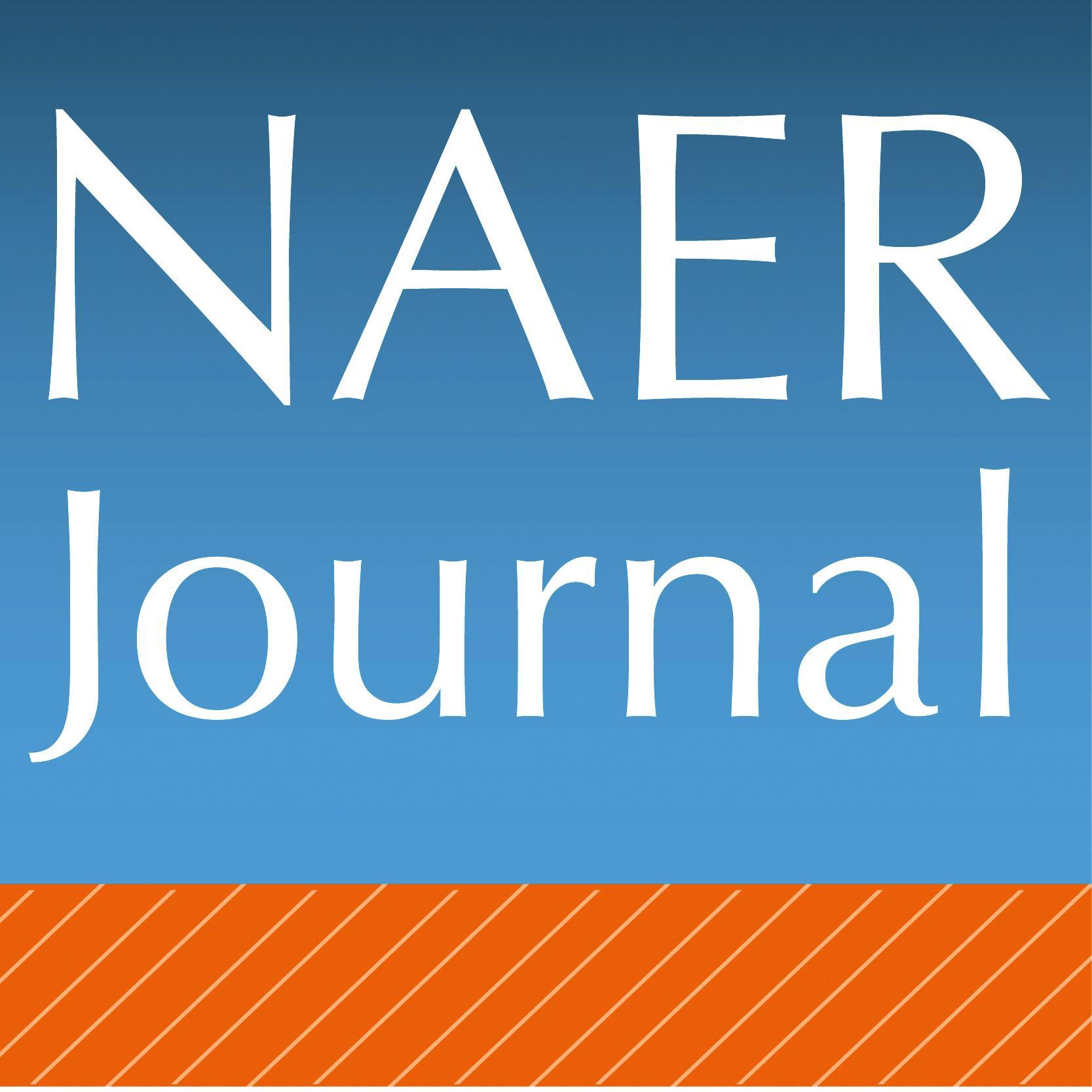Influencia del mentoring en el rendimiento de los participantes en las comunidades virtuales de práctica
Resumen
La Comunidad Virtual de Práctica (CVP) hace referencia a la red de personas que interactúan y comparten conocimientos con objeto de desarrollar su formación práctica y profesional. En este trabajo se presenta una investigación llevada a cabo con alumnado de Grado de Educación Primaria para conocer la influencia del mentoring en el rendimiento académico y en la satisfacción de participar en una CVP. Para ello, se desarrolló una CVP entre alumnado de diferente curso y cada estudiante construyó su Entorno Personal de Aprendizaje a través del aprendizaje colaborativo. La relación entre tutoría y rendimiento académico así como el nivel de influencia de la tutoría en el nivel de satisfacción del alumnado se analizó cuantitativamente. Entre los resultados destaca que los participantes valoran de forma satisfactoria la experiencia de participar e interactuar en una CVP, además de apreciar que la percepción que se tiene de la tutoría recibida no influye de forma directa en el rendimiento académico obtenido.
Descargas
-
Resumen1326
-
PDF948
-
Infografía344
Citas
Arbaugh, J. B. (2002). Managing the on-line classroom: a study of technological and behavioral characteristics of web-based MBA courses. Journal of High Technology Management Research, 13, pp. 203-223. doi: 10.1016/S1047-8310(02)00049-4
Barroso, J. y Cabero, J. (2013). Replanteando el e-learning: hacia el e-learning 2.0. Campus Virtuales, 2 (2), pp. 76-87.
Boneu, J. M. (2007). Plataformas abiertas de e-learning para el soporte de contenidos educativos abiertos. RUSC. Universities and Knowledge Society Journal, 4(1). Recuperado de http://www.raco.cat/index.php/RUSC/article/view/58133/68225
Cabero, J. (2006). Comunidades virtuales para el aprendizaje. Su utilización en la enseñanza. Edutec, XX. Recuperado de http://www.edutec.es/revista/index.php/edutec-e/article/viewFile/510/244
Cabero, J. y Llorente, M.C. (2008). La alfabetización digital de los alumnos. Competencias digitales para el siglo XXI. Revista Portuguesa de pedagogía. 42 (2), pp. 7-28. Recuperado de http://tecnologiaedu.us.es/cuestionario/bibliovir/jca26.pdf
Cabero, J. y Romero, R. (2010). Análisis de buenas prácticas del e-learning en las universidades andaluzas. Revista Electrónica Teoría de la Educación: Educación y Cultura en la Sociedad de la Información, 1 (1), pp. 283-309. de http://www.redalyc.org/articulo.oa?id=201014897012
Cabero, J. (2013). La formación virtual en el nuevo entramado 2.0: el e-learning 2.0. En I. Aguaded, y J. Cabero, Tecnologías y medios para la educación en la e-sociedad (pp. 23-52). Madrid: Alianza Editorial.
Castañeda, L. y Adell, J. (2011): El desarrollo profesional de los docentes en entornos personales de aprendizaje (PLE). En Roig Vila, R. y Laneve, C. (Eds.), La práctica educativa en la Sociedad de la Información: Innovación a través de la investigación (pp. 83-95). Alcoy: Marfil.
Castaño, C. (2009). Retos para el aprendizaje y la investigación en el elearning 2.0. En C. Castaño (Cood.), Web 2.0. El uso de la Web en la sociedad del conocimiento, (pp. 31-55). Caracas: Universidad Metropolitana.
Cebrian de la Serna, M. (2011). Supervisión con e-portafolios y su impacto en las reflexiones de los estudiantes en el Practicum. Estudio de caso. Revista de Educación, 354, pp. 183-208.
Chen, S. C., Yen, D. C. y Hwang, M. I. (2012). Factors influencing the continuance intention to the usage of Web 2.0: An empirical study. Computers in Human Behavior, 28 (3), pp. 933-941.
Conole, G. (2013). Digital identity and presence in the social milieu. Paper presented at the Pelicon conference, Plymouth.
Cuenca-Amigo, M., García-Feijoo, M. y Eizaguirre, A. (2016). Reflexión sobre el mentoring como experiencia de ocio educativo y social en personas mayores de 65 años. Revista Interuniversitaria de Formación del Profesorado, 30 (2), pp. 77-88.
De Backer, L., Van Keer, H. y Valcke, M. (2012). Exploring the potential impact of reciprocal peer tutoring on higher education students’ metacognitive knowledge and regulation. Instructional science, 40 (3), pp. 559-588.
Desouza, K. C., Awazu, Y. y Baloh, P. (2006). Managing knowledge in global software development efforts: Issues and practices. IEEE software, 23 (5), pp. 1-30.
Downes, S. (2012). E-Learning generations. Recuperado de http://halfanhour.blogspot.be/2012/02/elearning-generations.html
Eby. L.T. (1997). Alternative forms of mentoring in changing organizational environments: A conceptual extension of the mentoring literature. Journal of Vocational Behavior, 51, pp. 125-144. doi:10.1006/jvbe.1997.1594
Fernández-Sánchez, M. R. y Valverde-Berrocoso, J. (2014). Comunidades de práctica: un modelo de intervención desde el aprendizaje colaborativo en entornos virtuales. Comunicar: Revista Científica de Comunicación y Educación, 21(42), 97-105.
Galbraith, J. y Winterbottom, M. (2011). Peer‐tutoring: what’s in it for the tutor? Educational Studies, 37 (3), pp. 321-332.
Gallagher, S. y Newman, A. (2002). Distance learning at the tipping point. Critical success factors to growing fully online distance learning programs. Boston: Eduventures.
Geib, M., Braun, C., Kolbe, L. y Brenner, W., (2004). Measuring the Utilization of Collaboration Technology for Knowledge Development and Exchange in Virtual Communities. In System Sciences, 2004. Proceedings of the 37th Annual Hawaii International Conference, pp. 1-10.
Ginsburg-Block, M. D., Rohrbeck, C. A. y Fantuzzo, J. W. (2006). A meta-analytic review of social, self-concept, and behavioral outcomes of peer-assisted learning. Journal of Educational Psychology, 98 (4), pp. 732.
Gros, B. (2011). Evolución y reto de la educación virtual. Construyendo el elearning del siglo XXI. Barcelona: UOC. Recuperado de http://openaccess.uoc.edu/webapps/o2/bitstream/10609/9781/1/TRIPA__e-learning_castellano.pdf
Hannon, J. y D'Netto, B. (2007). Cultural diversity online: student engagement with learning technologies. International Journal of Educational Management, 21 (5), 418-432.
Hou, H. (2015). What makes an online community of practice work? A situated study of Chinese student teachers’ perceptions of online professional learning. Teaching and Teacher Education, 46, pp. 6–16. doi:10.1016/j.tate.2014.10.005
Kregor, G., Breslin, M. y Fountain, W. (2012). Experience and beliefs of technology users at an Australian university: Keys to maximizing e-learning potential. Australasian Journal of Educational Technology, 28 (8), pp. 1382-1404.
Llorente, C. (2012). El elearning 2.0: de la tecnología a la metodología. @ tic. revista d'innovació educativa, 9, pp. 79-86. doi: 10.7203/attic.9.1939
Moraga, D. (2011). Mentoring: Estrategia de liderazgo para el policía del siglo XXI. Revista Estudios Policiales, 8, pp. 99-107.
Moreno, A. J. (2012) Web Social-Recurso Educativo. Observatorio Tecnológico. Ministerio de Educación Cultura y Deporte. Madrid, España. Recuperado de http://recursostic.educacion.es/observatorio/web/es/internet/web-20/1060-la-web-20-recursos-educativos.
Moriones, E. R., Golinelli, G. F., López, M. G., Fernández, E. G., Esteban, A. B., Sánchez, M. A. y De Benito, M. V. (2013). Evolución de una comunidad de prácticas virtual para la mejora de la docencia online. Actas de las X Jornadas Internacionales de Innovación Universitaria (JIIU 2013).
Murua, I., Gallego, D. y Cacheiro, M. L. (2015). Caracterización de las cibercomunidades de aprendizaje (cCA). Revista de Educación a Distancia, 47, pp. 1-18. doi: 10.6018/red/47/4
Pérez, M. A. G. (2015). Enriquecimiento tecnológico y psicopedagógico del concepto de comunidades de práctica en la educación a distancia. Revista de Educación a Distancia, 47. Recuperado de http://revistas.um.es/red/article/view/242421/184241
Pineda, E., Meneses, T. y Téllez, F. R. (2013). Análisis de redes sociales y comunidades virtuales de aprendizaje. Antecedentes y perspectivas. Revista Virtual Universidad Católica del Norte, 1 (38), 40-55.
Reddick, R., Griffin, K., Cherwitz, R., Cérda-Pražák, A. y Bunch, N. (2012). What you get when you give: how graduate students benefit from serving as mentors. The Journal of Faculty Development, 26 (1), pp. 37-49.
Rísquez, A. (2010). La mentoría electronica entre pares para la adaptación a la universidad: Una experiencia de investigación aplicada. Tesis doctoral, Universidad Nacional de Educación a Distancia, Madrid.
Roca, J. C. y Gagné, M. (2008). Understanding e-learning continuance intention in the workplace: A self-determination theory perspective. Computers in Human Behavior, 24 (4), pp. 1585-1604. doi:10.1016/j.chb.2007.06.001
Roca, J., Chiu, C. y Martínez, F. (2006). Understanding e-learning continuance intention: An extension of the Technology Acceptance Model. International Journal of human-computer studies, 64 (8), pp. 683-696. doi:10.1016/j.ijhcs.2006.01.003
Salinas, J. (2005). La gestión de los entornos virtuales de formación. En Seminario Internacional sobre La Calidad de la Formación en Red en el Espacio Europeo de Educación Superior. Tarragona, España. Recuperado de http://gte.uib.es/pape/gte/sites/gte.uib.es.pape.gte/files/gestioEVEA_0.pdf
Sallán, J. G., y del Pilar, M. (2006). Análisis de la interacción en comunidades virtuales. Educar, 37, pp. 125-150.
Schwier, R.A., Morrison, D. y Daniel, B.K. (2009). A preliminary investigation of self-directed learning activities in a non-formal blended learning environment. Paper presented at the American Educational Research Association, San Diego, CA. Recuperado de http://es.scribd.com/doc/14224752/A-PreliminaryInvestigation-of-Self-Directed-Learning-Activities-in-a-Non-Formal-BlendedLearning-Environment
Seoane, A. M. y García-Peñalvo, F. J. (2014). Patrones pedagógicos y docencia en red. En J. A. Jerónimo Montes (Ed.), Formación en red: aprender con tecnologías digitales (pp. 30-47). México: Universidad Nacional Autónoma de México.
Shin, D.H. y Kim, W.Y. (2008). Applying the technology ac¬ceptance model and flow theo¬ry to cyworld user behavior: Implication of the Web2.0 user acceptance. Cyberpsychol. Behav. 11, pp. 378-382.
Silva, Q. (2011). Diseño y moderación de entornos virtuales de aprendizaje (EVA). Barcelona: UOC.
Soto, N. M., Cuadrado, A. M., García, M. S., Rísquez, A. y Ortega, M. S. (2012). El rol del mentor en un proceso de mentoría universitaria. Educación XX1, 15 (2), pp. 93-118.
Sun, P. C., Tsai, R. J., Finger, G., Chen, Y. Y. y Yeh, D. (2008). What drives a successful e-Learning? An empirical investigation of the critical factors influencing learner satisfaction. Computers & education, 50 (4), pp. 1183-1202.
Tang, E y Lam, C. (2014). Building an effective online learning community (OLC). In blog-based teaching portfolios. The Internet and Higher Education, 20, (pp. 79-85). doi:10.1016/j.iheduc.2012.12.002
Tremblay, P. F. y Rodger, S. (2003). The effects of a peer mentoring program on academic success among first year university students. The Canadian Journal of Higher Education, 33 (3), pp. 1-17.
Valverde, A., Ruiz de Miguel, C., García Jiménez, E. y Romero, S. (2004). Innovación en la orientación universitaria: La mentoría como respuesta. Contextos Educativos, 6-7, pp. 87-112.
Wenger, E., McDermott, R. y Snyder, W. M. (2002). Cultivating Communities of Practice: A guide to Managing Knowledge. Boston: Harvard Business School Press.
Wojciechowski, R. y Wojciech, C. (2013). Evaluation of learners´attitude toward learning in ARIES augmented reality environments. Computers & Education, 68, pp. 570-585. doi:10.1016/j.compedu.2013.02.014
Zhu, E. y Baylen, D. M. (2005). From learning community to community learning: pedagogy, technology and interactivity. Educational Media International, 42 (3), pp. 251-268.
Aquellos autores que tengan publicaciones con esta revista aceptan los términos siguientes :
-
Los autores conservarán sus derechos de autor y garantizarán a la revista el derecho de primera publicación de su obra, el cuál estará simultáneamente sujeto a la Licencia Creative Commons Atribución no comercial compartir por igual 4.0 Internacional que permite compartir, copiar y redistribuir el material en cualquier medio o formato y adaptar, remezclar, transformar y construir sobre el material en los siguientes términos:
Reconocimiento - Debe dar el crédito apropiado, proporcionar un enlace a la licencia, e indicar si se han realizado cambios. Puede hacerlo de cualquier manera razonable, pero no de una manera que sugiere que el licenciante o su uso hace suya. No comercial - No puede utilizar el material con fines comerciales. Compartir bajo la misma - Si remezcla, transformar o crear sobre el material, se debe distribuir sus contribuciones bajo la misma licencia que el original. -
Los autores podrán adoptar otros acuerdos de licencia no exclusiva de distribución de la versión de la obra publicada (p. ej.: depositarla en un archivo telemático institucional o publicarla en un volumen monográfico) siempre que se indique la publicación inicial en esta revista.
-
Se permite y recomienda a los autores difundir su obra a través de Internet (p. ej.: en archivos telemáticos institucionales o en su página web) antes y durante el proceso de envío, lo cual puede producir intercambios interesantes y aumentar las citas de la obra publicada. (Véase El efecto del acceso abierto).
-
En cualquier caso, el Equipo Editorial entiende que las opiniones vertidas por los autores son de su exclusiva responsabilidad.
















